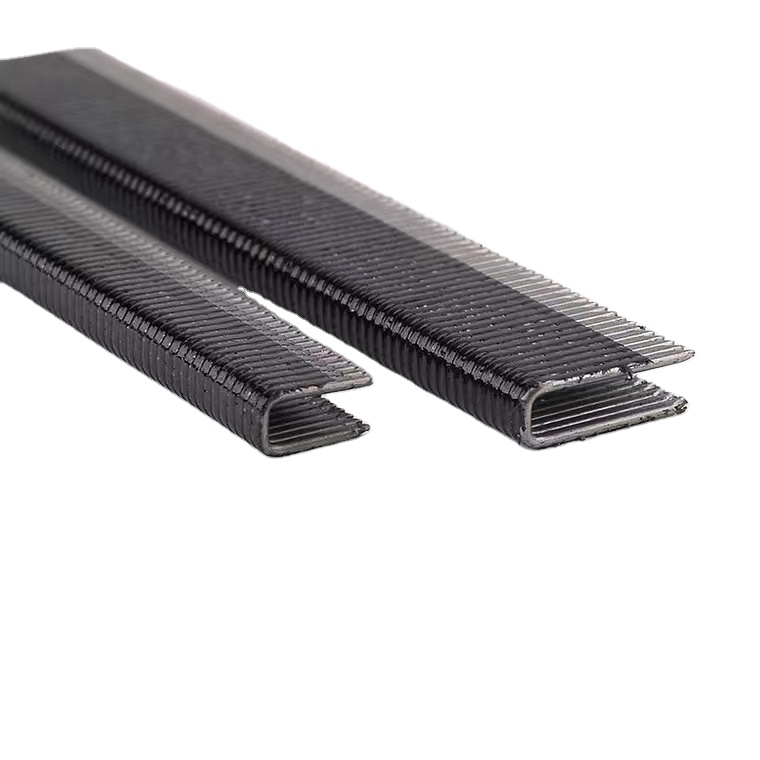មិថុនា . 16, 2024 15:17
Back to list
Brad nails finish nails manufacturers near me.
The Evolution and Impact of Brad Nails in the Manufacturing Industry
Brad nails, also known as finishing nails, have revolutionized the way furniture and other wooden structures are assembled. These small, precision-made fasteners have become an essential tool for manufacturers, offering a quick and efficient solution for joining wood and other materials. In this article, we will explore the evolution of brad nails and their impact on the manufacturing industry.
The development of brad nails can be traced back to the early 20th century when the demand for faster and more efficient construction methods began to rise. Initially, these nails were hand-driven, but with advancements in technology, pneumatic nail guns were introduced, significantly reducing the time and effort required to secure joints. This innovation allowed for increased productivity and opened up new possibilities in design and construction.
One of the key advantages of brad nails is their size and strength relative to their weight. They are typically between 1 to 2 inches long and are thinner than traditional nails, allowing them to be used in delicate or intricate projects without splitting the wood. The small head of the brad nail, when driven flush, results in a clean, finished look that is ideal for high-end furniture or trim work.
Manufacturers have embraced brad nails for their consistency and reliability
Manufacturers have embraced brad nails for their consistency and reliability Manufacturers have embraced brad nails for their consistency and reliability
Manufacturers have embraced brad nails for their consistency and reliability
Manufacturers have embraced brad nails for their consistency and reliability
Manufacturers have embraced brad nails for their consistency and reliability brad nails finish nails manufacturers. Unlike screws or bolts, which can strip or damage easily, brad nails provide a secure hold that is less likely to fail over time. This reliability has made them a preferred choice for mass production, where quality control is paramount.
The use of brad nails has not only improved the speed and quality of manufacturing processes but has also had environmental benefits. By using nails instead of glues or adhesives, manufacturers reduce their reliance on potentially harmful chemicals. Furthermore, nails are recyclable and can be easily removed at the end of a product's life cycle, aiding in sustainable practices.
In conclusion, brad nails have played a pivotal role in shaping modern manufacturing processes. Their efficiency, strength, and aesthetic appeal have made them an indispensable tool for joinery tasks. As technology continues to advance, it is likely that we will see further innovations in nail design and application, ensuring that brad nails remain at the forefront of the construction and manufacturing industries for years to come.
brad nails finish nails manufacturers. Unlike screws or bolts, which can strip or damage easily, brad nails provide a secure hold that is less likely to fail over time. This reliability has made them a preferred choice for mass production, where quality control is paramount.
The use of brad nails has not only improved the speed and quality of manufacturing processes but has also had environmental benefits. By using nails instead of glues or adhesives, manufacturers reduce their reliance on potentially harmful chemicals. Furthermore, nails are recyclable and can be easily removed at the end of a product's life cycle, aiding in sustainable practices.
In conclusion, brad nails have played a pivotal role in shaping modern manufacturing processes. Their efficiency, strength, and aesthetic appeal have made them an indispensable tool for joinery tasks. As technology continues to advance, it is likely that we will see further innovations in nail design and application, ensuring that brad nails remain at the forefront of the construction and manufacturing industries for years to come.
 Manufacturers have embraced brad nails for their consistency and reliability
Manufacturers have embraced brad nails for their consistency and reliability
Manufacturers have embraced brad nails for their consistency and reliability
Manufacturers have embraced brad nails for their consistency and reliability brad nails finish nails manufacturers. Unlike screws or bolts, which can strip or damage easily, brad nails provide a secure hold that is less likely to fail over time. This reliability has made them a preferred choice for mass production, where quality control is paramount.
The use of brad nails has not only improved the speed and quality of manufacturing processes but has also had environmental benefits. By using nails instead of glues or adhesives, manufacturers reduce their reliance on potentially harmful chemicals. Furthermore, nails are recyclable and can be easily removed at the end of a product's life cycle, aiding in sustainable practices.
In conclusion, brad nails have played a pivotal role in shaping modern manufacturing processes. Their efficiency, strength, and aesthetic appeal have made them an indispensable tool for joinery tasks. As technology continues to advance, it is likely that we will see further innovations in nail design and application, ensuring that brad nails remain at the forefront of the construction and manufacturing industries for years to come.
brad nails finish nails manufacturers. Unlike screws or bolts, which can strip or damage easily, brad nails provide a secure hold that is less likely to fail over time. This reliability has made them a preferred choice for mass production, where quality control is paramount.
The use of brad nails has not only improved the speed and quality of manufacturing processes but has also had environmental benefits. By using nails instead of glues or adhesives, manufacturers reduce their reliance on potentially harmful chemicals. Furthermore, nails are recyclable and can be easily removed at the end of a product's life cycle, aiding in sustainable practices.
In conclusion, brad nails have played a pivotal role in shaping modern manufacturing processes. Their efficiency, strength, and aesthetic appeal have made them an indispensable tool for joinery tasks. As technology continues to advance, it is likely that we will see further innovations in nail design and application, ensuring that brad nails remain at the forefront of the construction and manufacturing industries for years to come. Latest news
-
Manufacturer producing brad nails for staple guns with high quality and durability.NewsJul.16,2024
-
CE certification for 5-8mm brad nails and its importance in construction.NewsJul.16,2024
-
Top 16 Gauge Brad Nail Manufacturers with High Quality Products and ServicesNewsJul.16,2024
-
China 18 Gauge Brad Nails for Precision Carpentry Projects in 2021.NewsJul.16,2024
-
Top manufacturer of BN1810 brad nails, providing high quality products for various applications.NewsJul.16,2024
-
Get the job done with 18-gauge staples in 40mm size for various projects.NewsJul.15,2024
